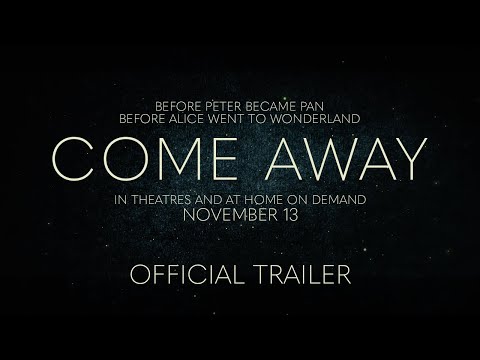‘Come Away’ Shows Hollywood at Its Most Manipulative
Movie marketing can be a brutal task, made worse by the films themselves.
“Come Away” offers a prime example. The film piggybacks on not one but two beloved children’s stories but feels as grim as the darkest Afterschool Special.
- Drinking
- Gambling
- Death
- Torture
Are we having fun yet?
More importantly, just who is “Come Away” supposed to reach? Don’t believe the whimsical trailer, that’s for sure.

Jack and Rose (David Oyelowo and Angelina Jolie) have three beautiful children (Kera Chansa, Jordan A. Nash, Reece Yates) who live to romp around their backyard, lost in imaginative play. Their family dynamic, alas, is anything but playful. Jack has a gambling problem and Rose numbs her pain with alcohol.
Cheery, right? It gets worse.
Death stalks the storyline, so does debt and despair. These poor children are expected to not just survive but potentially save the day against the most daunting of odds. Meanwhile, the story awkwardly shoehorns not one but two intellectual properties into the mix — “Peter Pan” and “Alice in Wonderland.”
If you’re thinking, “what?” “how?” or “who?” you’re in fine company.
Marissa Kate Goodhill’s screenplay, a soggy affair at best, strains to incorporate the classic tales into “Come Away’s” DNA. The film starts with the kind of generic storytelling found in the worst faith-based films. From there we get gorgeous cinematography and the hint of something wondrous lurking around the cinematic corner.
It never arrives.
Hollywood is obsessed with teasing out franchises and classic properties alike. At times those pursuits hit creative pay dirt. Consider NBC’s excellent “Hannibal” series, or the prequel saga “Bates Motel.”

Here, the organic spark found in the works of J.M. Barrie and Lewis Carroll is mostly missing. What’s left is a marketing hook, something audiences can suss out a mile away.
“Come Away” stumbles with even the basic details. Our Jack is a master craftsman, building delicate boat models for the upper class. We’re constantly told he’s beneath his customers, from a societal point of view, but we see little evidence of that.
Anna Chancellor gets copious screen time as an aunt trying to transform Chansa’s Alice into a fine young lady, but her character’s inconsistencies prove her undoing.
FAST FACT: Charles L. Dodgson penned classic tales like “Alice’s Adventures in Wonderland” and “Through the Looking Glass” under the pen name Lewis Carroll.
Old pros like Michael Caine and Derek Jacobi offer a dollop of gravitas, but they aren’t around long enough to matter. Poor Jolie is given little to do as well despite her significantly larger role. Even a first act marital conflict provides little dramatic heft.
Some of the set design is transparently fake, but not in any way that makes things look more imaginative.
The film’s score strains, and strains, to make us feel something, anything, but good luck with that. By the final moments you’ll wonder what classic literature Hollywood will repurpose next, and if it’ll be as ill-conceived as “Come Away.”
HiT or Miss: “Come Away” is a sad attempt to play off two beloved tales, lifting key details from each without the heart, and the timelessness, they represent.
The post ‘Come Away’ Shows Hollywood at Its Most Manipulative appeared first on Hollywood in Toto.





